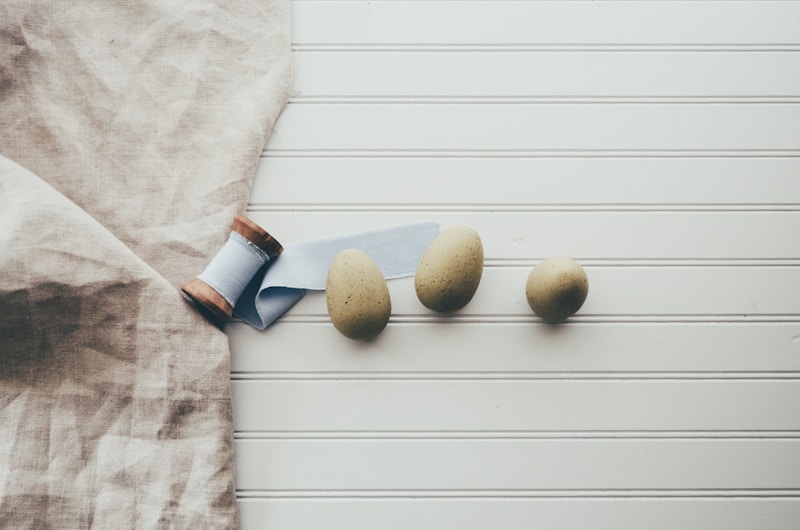Mastering Soft Draping Techniques: A Comprehensive Guide
Understanding Soft Draping Techniques
Soft draping techniques are essential skills for fashion designers, costume creators, and anyone interested in the art of fabric manipulation. These techniques allow artists to create stunning silhouettes and designs that have a natural flow. In this article, we will explore the various aspects of soft draping, its history, applications, and tips for achieving the perfect drape.
The History of Draping in Fashion
The practice of draping has been part of fashion for centuries. It originated from the need to create clothing that not only fit but also flattered the human form. Draping was heavily influenced by historical periods such as the Roman Empire, where garments were created using simple cuts and folds. As fashion evolved, so did the techniques, giving birth to new styles and innovations.
What Are Soft Draping Techniques?
Soft draping techniques refer to methods used to manipulate fabric in a way that allows it to flow gently over the body. Unlike stiff fabrics that hold their shape, soft draping relies on lightweight textiles such as silk, chiffon, and jersey. The goal is to enhance the body's natural curves and create a sense of movement.
Key Techniques in Soft Draping
- Gathering: A technique where fabric is drawn together to create fullness, allowing it to cascade pleasingly.
- Folding: Involves creating structured folds that add depth while maintaining a soft silhouette.
- Layering: Overlapping different fabrics or colors creates dimension and visual interest.
- Bias Cut: Cutting fabric at a 45-degree angle allows it to stretch and drape beautifully over the body's contours.
| Soft Draping Techniques Examples | Fabric Types |
| Gathering | Silk, Chiffon |
| Folding | Jersey, Tulle |
| Layering | Georgette, Organza |
| Bias Cut | Crepe, Satin |
Choosing the Right Fabrics for Soft Draping
The choice of fabric is crucial in achieving effective soft draping techniques. Lightweight, fluid materials are best suited for these techniques. Here are some popular fabric choices:
- Silk: Known for its luxurious feel and natural sheen, silk drapes beautifully and provides a high-quality finish.
- Chiffon: This sheer fabric is lightweight and airy, making it perfect for soft draped details.
- Jersey: Stretchable and body-hugging, jersey can create stunning drapes that enhance movement.
- Georgette: Similar to chiffon but slightly heavier, it offers a beautiful drape while still being easy to work with.
Common Challenges in Soft Draping
While mastering soft draping techniques can be rewarding, it is not without its challenges. Here are some common issues and tips to overcome them:
- Unintentional Stiffness: If your fabric feels rigid despite being lightweight, try steaming it to release any tightness.
- Poor Fit: Ensure to take accurate body measurements before beginning your draping project.
- Layering Issues: Too much fabric can obscure the natural silhouette; aim for balance in your layering technique.

Applications of Soft Draping Techniques
Soft draping techniques are widely used in various fields, including:
Fashion Design
In fashion, draping can create high-fashion couture looks for runways. Designers utilize soft draping to achieve unique shapes and visually captivating garments.
Theatrical Costume Design
Costume designers often rely on soft draping to create character-appropriate outfits that portray emotion and context within performances.
Interior Design
Soft draping techniques are not exclusive to fashion; they can also be used in interior design. Draped textiles can add warmth and elegance to a space while creating an inviting atmosphere.
Tips for Mastering Soft Draping
To perfect your soft draping skills, consider the following tips:
- Practice: Regular practice is key to mastering any technique. Experiment with different fabrics and styles to find what works best for you.
- Utilize a Dress Form: A dress form can help visualize how the fabric interacts with the body and how it flows.
- Watch Tutorials: Online platforms provide a wealth of tutorials that demonstrate various soft draping techniques.
- Join Workshops: Participating in workshops can provide hands-on experience and valuable feedback from instructors.
Conclusion
Soft draping techniques are a fascinating area of study in the world of fashion and design. By understanding the historical context, mastering various methods, and applying practical tips, anyone can enhance their fabric manipulation skills. Whether you are designing a gown for a gala or creating theatrical costumes, soft draping will enable you to create designs that breathe with life and movement. Remember to choose the right fabrics and practice diligently, and soon you'll be able to achieve stunning results with soft draping techniques.
As you embark on your journey to mastering these techniques, keep in mind the importance of experimentation and continuous learning. The more you explore soft draping, the more your creativity will flourish. Don’t hesitate to seek feedback and collaborate with fellow designers, as community growth is a vital part of the artistic process.